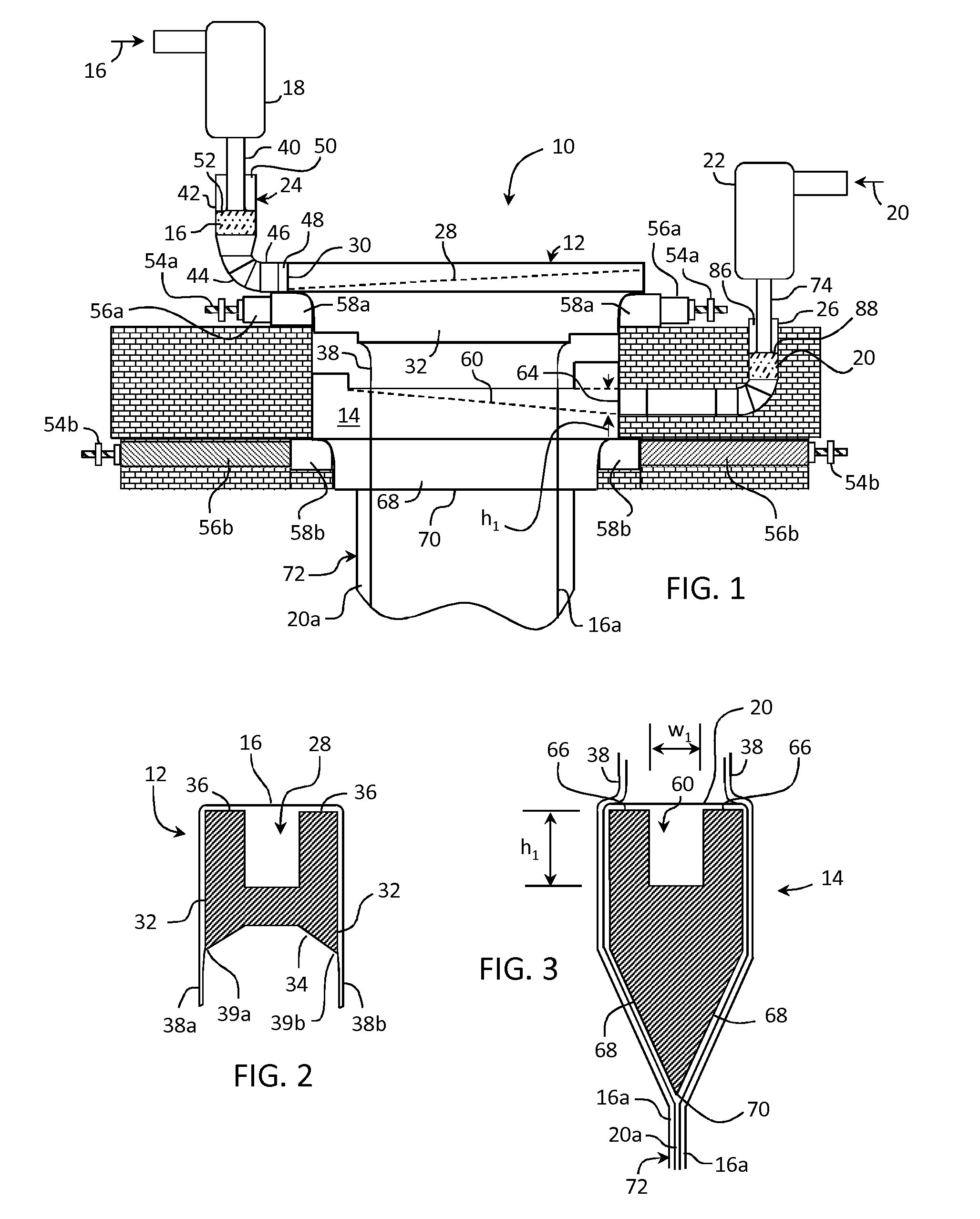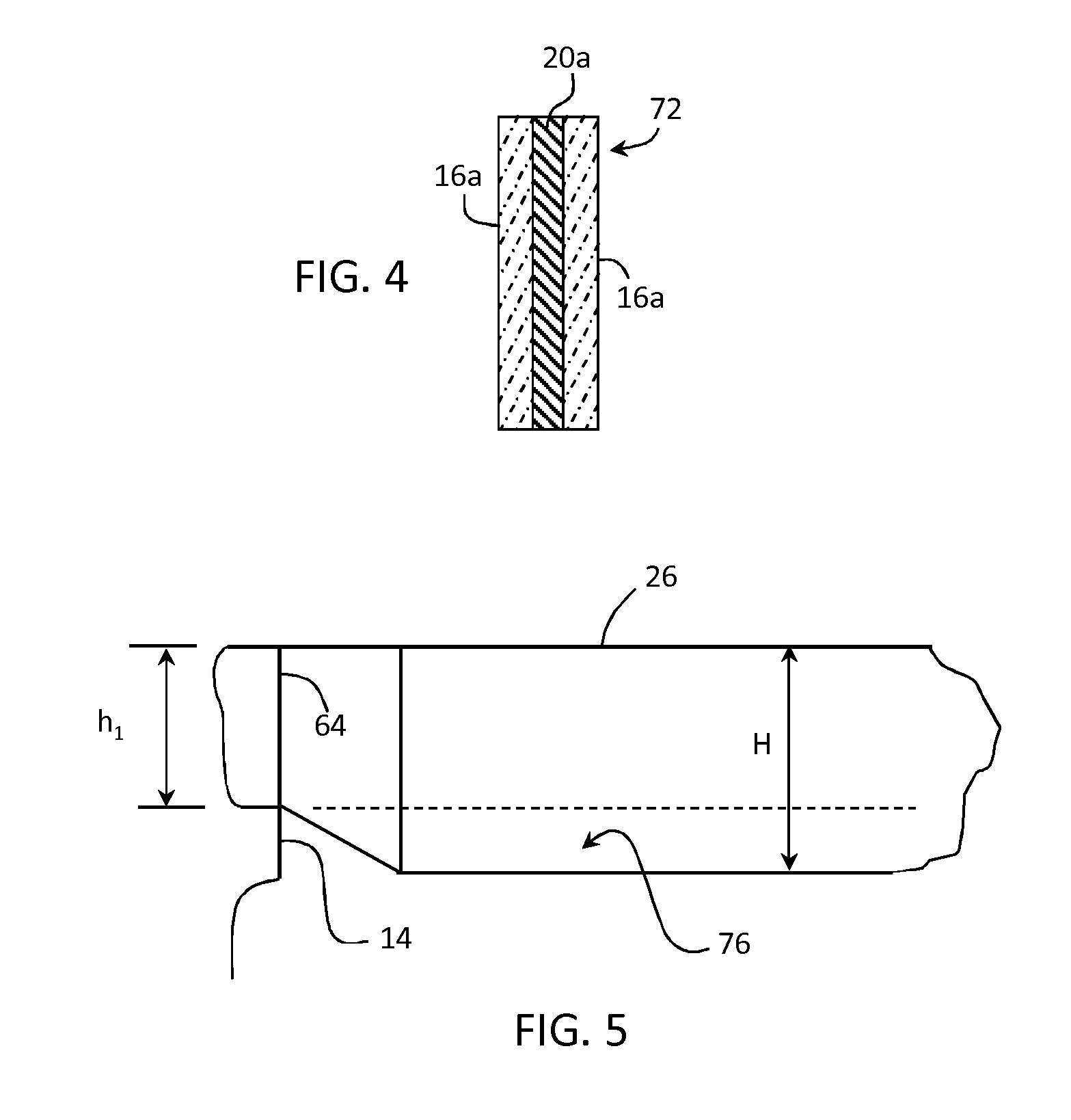Apparatus and method for processing molten glass
a technology of apparatus and glass, applied in glass making apparatus, glass rolling apparatus, manufacturing tools, etc., can solve the problems of increasing the cost, increasing the cost, and expensive batch process requiring multiple steps, so as to reduce the flow impedance and increase the diameter of the condui
- Summary
- Abstract
- Description
- Claims
- Application Information
AI Technical Summary
Benefits of technology
Problems solved by technology
Method used
Image
Examples
Embodiment Construction
[0029]Reference will now be made in detail to embodiments disclosed herein, examples of which are illustrated in the accompanying drawings. Whenever possible, the same reference numerals will be used throughout the drawings to refer to the same or like parts.
[0030]FIG. 1 illustrates an example glass forming apparatus comprising two forming bodies, wherein one forming body is positioned vertically below the other forming body. Each forming body is supplied with molten glass from a separate delivery vessel and includes separate devices for supporting and longitudinally compressing the respective forming body to prevent sagging when operating for extended periods at high temperature. Because this equipment is located at both ends of each forming body, and the vertically aligned placement of the forming bodies consumes valuable space around each forming body, the delivery vessel supplying molten glass to the lower forming body is displaced farther from the lower forming body than the de...
PUM
| Property | Measurement | Unit |
|---|---|---|
| viscosity | aaaaa | aaaaa |
| width | aaaaa | aaaaa |
| viscosity | aaaaa | aaaaa |
Abstract
Description
Claims
Application Information
 Login to View More
Login to View More - R&D
- Intellectual Property
- Life Sciences
- Materials
- Tech Scout
- Unparalleled Data Quality
- Higher Quality Content
- 60% Fewer Hallucinations
Browse by: Latest US Patents, China's latest patents, Technical Efficacy Thesaurus, Application Domain, Technology Topic, Popular Technical Reports.
© 2025 PatSnap. All rights reserved.Legal|Privacy policy|Modern Slavery Act Transparency Statement|Sitemap|About US| Contact US: help@patsnap.com



